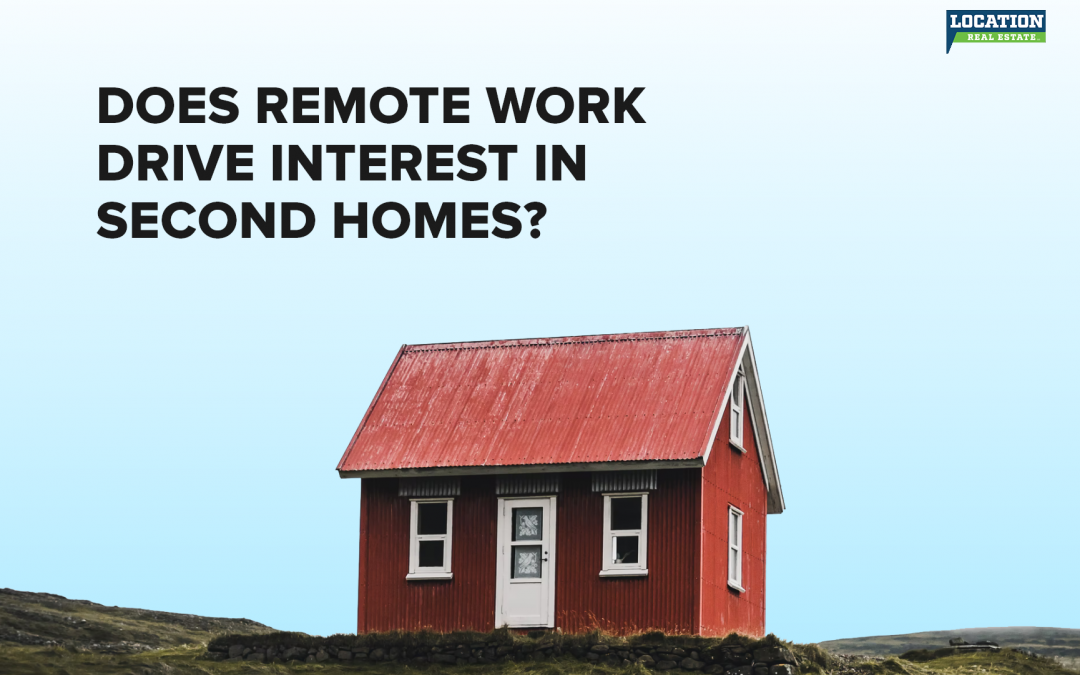Remote work has fueled people’s interest in second homes or vacation homes across the US. Since the year 2020, followed by the outburst of the COVID-19 pandemic, the US has experienced an unprecedented boom for vacation homes.
Property sales jumped as high as 16% in 2020, three times the gain scored by the sale of existing homes which was 5.6%. As the restrictions brought about by COVID-19 were lifted, the real estate market witnessed a sea of buyers seeking a retreat toward the end of 2020.
Most of the people investing in second homes were city-dwellers who were drawn toward the captivating serenity of the oceans or the appealing stillness of the mountains.
As reported by the Realtors group, compared to other counties, existing property’s median sale price climbed as high as 14% in vacation-home counties.
Are you looking for a property for sale in Nebraska? Talk to us today. We’ll help you to lock the best deal.
With the remote-work model being embraced by employers and employees alike, there is no reason to believe that employees would be too eager to revisit the previous models of working any time sooner. This means that vacation housing and second homes will stay on the buyer’s list when working remotely.
According to a report by Redfin, buyers locking in mortgage rates for second homes has shown a record rise (128%) since March 2021, marking an annual growth of 80%. In comparison, the demand for second homes was relatively weak in March 2020 (with the first wave of the pandemic hitting the country, real estate activity had to be halted temporarily across the US).
With vaccinations being rolled out, some organizations are considering opting for a hybrid model, where workers would require working from the office at least three days a week. However, the demand for a vacation home or second home is still rising as many remote workers are finding solace in spending at least part of their time in vacation destinations.
When compared with the demand for primary homes, the annual rise in demand for second homes has quadrupled the overall year-over-year gain.
The real estate market of Los Angeles and San Francisco have been incredibly busy, with an influx of vacation-home buyers, who are mostly tech employees and can work remotely. Most of them are investing in a second home as they have taken a liking to the weather and lifestyle in the desert.
The idea of vacationing in a hotel room is no longer a preferred choice. Some of the buyers even plan on turning their vacation or second homes into Airbnb rentals. This could be a great source of income when they are out of town.
Financial recovery could be another reason why people are suddenly interested in a second home, which is a piece of positive news. Often, second homes are located in seasonal towns (a seasonal town is an area with 30% of its housing being used for seasonal or recreational purposes), which have higher prices when compared with non-seasonal towns.
In February, the median sale price for homes in seasonal towns was up by 19% year over year (eighth straight month of over 10% year-on-year growth). In comparison, for non-seasonal towns, the median sales prices for homes climbed up by 16%.
Home prices are a record high in almost every part of the country. However, the home sales prices rising in seasonal towns implies that second-home buyers are preferring these markets, which ultimately pushes up the prices for locals.
The question is: how are people financing the investment on a second home?
The interest rates for second homes are nowhere near that of primary home mortgages. Also, buyers would likely need to have more than the standard 20% down payment.
However, if we are to look at the bigger picture, the rich are getting richer as they get to keep their jobs and have the privilege of working from home. The robust stock market and the rising real-estate values are adding to their incomes.
However, people employed in industries that are still far from recoveries, such as hospitality, restaurants, and others are likely to earn lower incomes. It looks like the recession has played a major role in furthering the gap between the wealthy and low-income people; the wealthier ones are looking to invest in second homes while the less fortunate are unable to buy their first.
According to Redfin’s Chief Economist, the rising home prices are a good sign for Americans, who are looking for a way to take advantage of their increased equity to invest in newer assets, such as buying a second home. However, it might not be a good sign for people with a lower income bracket, especially for renters, as their struggle for homeownership is rising even higher.
How will you manage the ongoing expenses?
You need to think beyond the purchase price of the second home. A lot of things might need to be taken care of, for instance, the new home might need a renovation before you can move in. In addition to furniture and other expenses, you might have to take care of recurring expenses, including insurance, landscape care, and others.
Before you lock in on a deal, it is important that you discuss the trade-offs with your financial advisor to understand how you would be able to afford the ongoing costs.
If you are looking for a home for sale in Lincoln, call us today.

